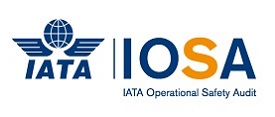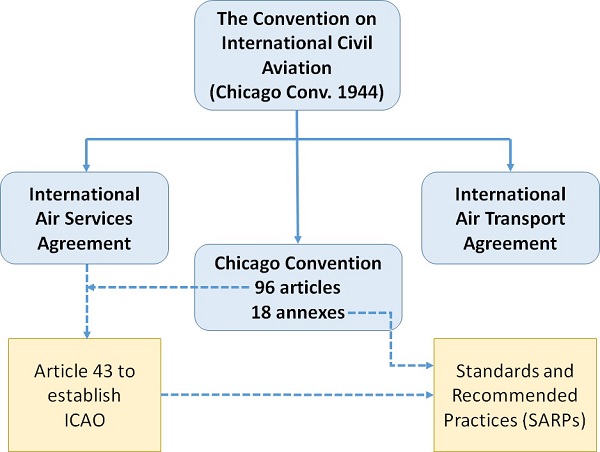Aviation Law is one of the specialty field in Studies of Law. Air Law is a general viewpoint that covers the special characteristics and demands of aviation field. There is no governing body with the right to frame the air laws governing all states in the legal sense or there is not any international law. But the phrase Air Law is used to describe a system of implicit and explicit agreements that the nations together. These agreements are known as conventions. There are numerous conventions such as Chicago, Rome, Tokyo, Geneva, and few more. Let us discuss more about the aviation law.
What is Air Law?
It is a branch of law that is concerned with air transport operations, and all the associated legal and business concerns. This is a series of rules that governs the use of airspace for aviation, and its benefits for the general public and the nations of the world.
The first attempt to set the air law was made around 1910, when German air balloons repeatedly trespassed over French territory. The French government wanted both the governments to come together to form an agreement to resolve the problem. The Paris Conference of 1910 was in favor of the sovereignty of states in the space above their territories.
It started developing further when after the World War I, the first scheduled flight from Paris to London took its first flight in 1909.
Public International Air Law: Chicago Convention
A Convention on International Civil Aviation was signed at Chicago on 7th December, 1944. It established specific principles in order to develop international civil aviation in a safe and orderly manner. It also ensures that international air transport services are established on the basis of fair opportunity for participating countries.
The convention formed the International Civil Aviation Organization (ICAO), the Canada-based agency of the United Nations. It sets the principles of international air navigation and works to −
- Ensure a well-ordered growth of international civil aviation throughout the world.
- Encourage aircraft design and operation for peaceful and constructive purposes.
- Promote the development of airways, airports, and air navigation facilities for international civil aviation.
- Meet the safety, regularity, efficiency, and economical air transport needs of the people around the world.
- Prevent unplanned economic decisions and in turn waste.
- Ensure that each Contracting State has an opportunity to operate international airlines.
- Encourage flight safety in international air transport.
- Foster the development of all aspects of international civil aviation.
Air Law in European Union
The laws are regarding the following −
- Sovereignty − It is the right of a state to impose its national law on users of its airspace.
- Territory − It is the airspace over and within the territorial borders of a state. Territorial airspace has no vertical limit. For the states with sea boundaries, territorial airspace extends beyond the land. This limit is internationally agreed limit of the territorial waters.
International Air Laws
The three International Air Laws are as follows −
Public International Law
It refers to the process which binds the states and international organizations to agreements with respect to their aviation activities. The activities may be among various problems of political, technical, economical, financial, social or legal nature. For example, the Chicago Convention, the Geneva Convention, and some international conventions.
Private International Law
It is the series of rules pertaining to the relations between private persons involved in the operation and the use of aircraft. It applies to the travelers and airline staff. For example, the Tokyo Convention frames the prohibition of unlawful acts committed on the aircraft.
Supranational Law
It is a law that a higher body can impose with legal force on one or more states. For example, EU air laws.
IOSA and its Importance
The IATA Operational Safety Audit (IOSA) is an internationally recognized and accepted system that audits and certifies operational management and control systems in the airlines.
IATA formed this certifying evaluation body in 2003. It conducts airline audits according to the aviation laws consistently.

The airlines which have no IOSA certification probably either failed in the auditing or they did not participate in auditing at all. Carrying out IOSA audit makes an airline more reliable but the cost of audit is high. Mostly only international airlines participate in the audit as they can bear the cost of audit and implement the changes suggested.
The crash-rate, which is measured per specific number of flights, is three times less in the airlines which took IOSA audit than the ones which did not.
International Civil Aviation Organization (ICAO)
ICAO consists of an Assembly of representatives from the contracting states, a Council of governing bodies out of various subordinate bodies, and a Secretariat. The chief officers are the President of the Council and the Secretary General. ICAO conducts meeting every three years to discuss about the work and to set future policies.

The suggestions, standards, and recommendations are amended by the convention. ICAO identifies nine separate geographical regions to plan the provision of air navigation facilities and on-ground services the aircrafts require for flying in these regions.
Freedoms of the Air
There are five different freedoms of the air. The first two are technical freedoms followed by three commercial freedoms −
- First Freedom − The right of aircraft from State A to overfly State B without landing.
- Second Freedom − The right of aircraft from State A to land in State B for technical reasons.
- Third Freedom − The right of aircraft from State A to accept paying traffic from State A and put it down in State B.
- Fourth Freedom − The right of aircraft from State A to pick up paying traffic in State B and put it down in State A.
- Fifth Freedom − The right of aircraft from State A to take paying traffic from State B to State C.

Comments
Post a Comment